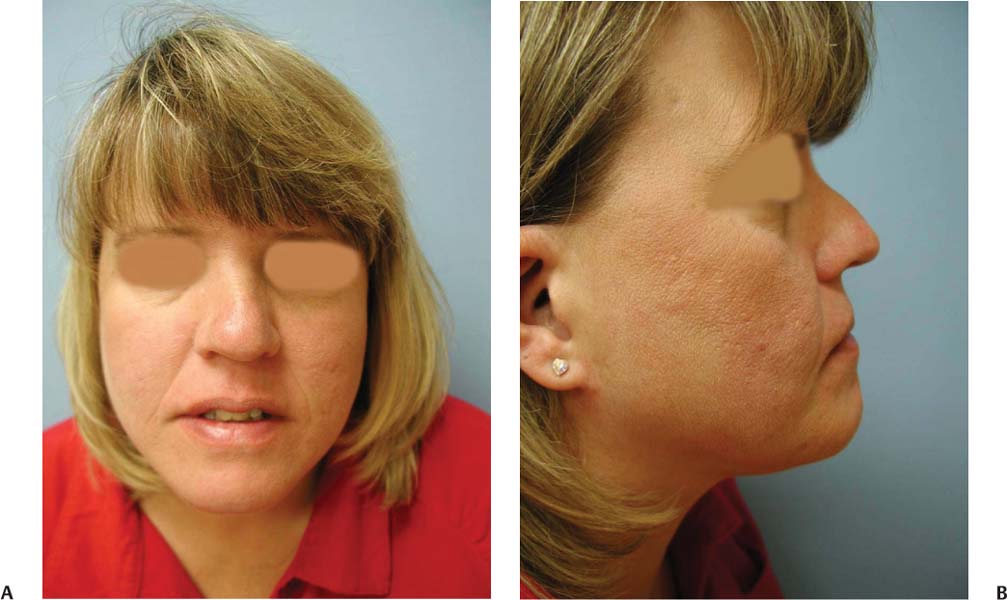86 A 47-year-old woman states that she would like improvement of the appearance of her nose on lateral profile (Fig. 86.1). She states that she had a nasal surgery 4 years ago by another physician, and she is pleased that he improved her nasal breathing; but she feels like her nose is beaklike on side profile. She can breathe through both sides without difficulty. She is in good health and does not smoke. She is currently married and works as a full-time elementary teacher. She is pleasant, realistic, and seeks improvement of her lateral nasal profile. She has been considering a second nasal surgery over the past 3 years. Her motivation for the nasal surgery is self-improvement. Fig. 86.1 Frontal (A) and lateral (B) views of a 47-year-old woman interested in rhinoplasty. 1. The patient is realistic about her goals and does not expect life-altering changes to occur. 2. The abnormal tip–supratip relationship in this patient is referred to as a pollybeak deformity. This deformity is usually secondary to a rhinoplasty leading to postoperative fullness of the supratip region. 3. The patient also has a deviated middle and lower nose with an amorphous nasal tip. 4. The good recoil of the nasal tip shows adequate strength of underlying support structures. 5. It is important to inspect the face in its entirety and not just the nose to determine overall symmetry and the relationship of the chin, cheeks, eyes, and forehead. In addition, skin thickness, pigmentation, and the degree of sebaceous units should be noted. All of these can influence surgical outcome.
Pollybeak Nasal Deformity
History
Differential Diagnosis—Key Points
Test Interpretation
Stay updated, free articles. Join our Telegram channel

Full access? Get Clinical Tree



